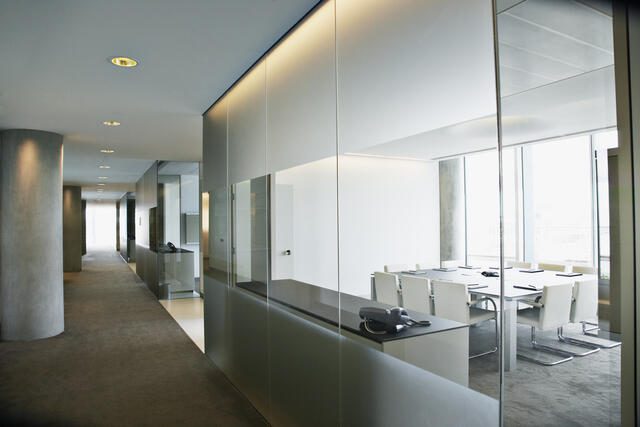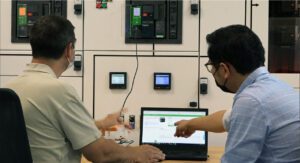In this four-part blog series, we’ll be looking at a range of best practices for commercial building owners and managers during times of low occupancy and how to prepare your office building for the return to work. During unexpected global circumstances, building usage has been reduced to only essential workers in many cases. But even during regular operations, it is common for a significant percentage of employees to take vacation during summer months, which can also create inefficiencies.

During such periods, it is important that facility managers and commercial building owners optimize building operations to ensure service continuity, occupant safety, and operational efficiency. It’s also important to coordinate a smooth start-up when returning to normal operating capacity.
In this post, I’m presenting a simplified list of steps your team should consider when operating at low occupancy. For a more detailed dive, download our complete application note on “Managing Low Occupancy Buildings to Improve Safety and Operational Efficiency with EcoStruxure for Commercial Real Estate,” and for more ideas related specifically to energy efficiency, refer to “10 best practices for energy efficiency in low-occupancy buildings.”
Control HVAC
To start, consider going beyond typical weekend setpoints by setting deeper office building low-occupancy setpoints (e.g. ±10 °F change versus ±5 °F). Climate should be taken into account as well as factoring in lower BTU loads due to lower support system needs, such as lighting and IT. New settings can be programmed through the building management system, while some zones may require manual adjustment.
For heat production, only a single boiler should be running with adapted setpoints and can be started/stopped according to needs. For steam and hot water boilers, consult trained specialists to reduce or shut down boilers which may not be needed during low occupancy. Consider running only a single chiller with adapted setpoints and start/stop to manage comfort needs of remaining employees for air conditioning.
Circulating water should be enough without exchanger activity. Every distribution pump circuit, both cold and hot, should continue running, with alternance based on running hours. Air handling units can be retarded individually, depending on the requirements for outside air, heating or cooling specific areas, and temperature needed in these areas. Indoor dew points should be properly maintained to avoid mold and moisture issues. Chilled beams, fan coil units, radiant heating and cooling units, and terminal units can all be run in economy mode.
It is important to maintain air quality to accommodate remaining staff, so establishing works zones for maintenance and security may be necessary. Extraction ventilation with automatic start and stop can be used periodically to improve comfort as well.
Reduce lighting
As lighting consumes anywhere from 7 to 15% of total electricity use in large office buildings (depending on the lighting technology), it should be limited during times of low occupancy. This can be accomplished using lighting presence detection in corridors. Without the use of presence detection, lighting can be turned on and off by building occupants in each space as needed.
Manage security
For the low occupancy situation, you should limit access control authorizations as usual, or establish new guidelines. Security alarms must be managed with high priority. Guard tours should also continue, and may also be an opportunity to check equipment status and detect water leaks and other failures. Video surveillance may prove to be of heightened importance for intrusion alerts. A period of low occupancy is also a good time to perform fire alarm checks, as it will not disturb office staff. Cybersecurity is also a critical area of concern, but we’ll cover that in a dedicated upcoming post.
Minimize fluid flow
Check to make sure water continues to flow through pipes, as stagnant water creates a health risk and can lead to higher than normal corrosion in non-potable systems. Consult your water services specialist to find the most accurate regulation on minimum water flow. Ensure meters are set to alarm on unexpected consumption or low fuel levels, which may indicate a leak. Reduce energy and fluid consumption by lowering setpoints.
Continue use of renewables
If your commercial building has renewable energy sources, such as solar panels, continue producing for immediate electrical consumption and if possible, storage or selling energy back to the grid. If using geothermal energy, continue producing to help save energy for heating and cooling.
Monitor IT rooms
During periods of prolonged low occupancy, proper functioning of information technology is even more business critical. Regular operations must be maintained in IT rooms, ensuring any changes to temperature setpoints in the building do not negatively impact IT room temperature. Remote management can help. Emergency UPS and generators should be visually checked and maintained to ensure smooth operations, and you may consider having these systems professionally serviced.
Other commercial building considerations
Maintaining an efficient and safe property during periods of low occupancy for your commercial buildings can also include other steps. Read our application note to see further recommendations.
To learn more about connected products you can use to manage buildings during low occupancy periods, visit EcoStruxure™ for Commercial Real Estate, and be sure to check-out my co-author’s blog on “5 Predictions for 2020: The Year People Will Take Back Commercial Real Estate.“



